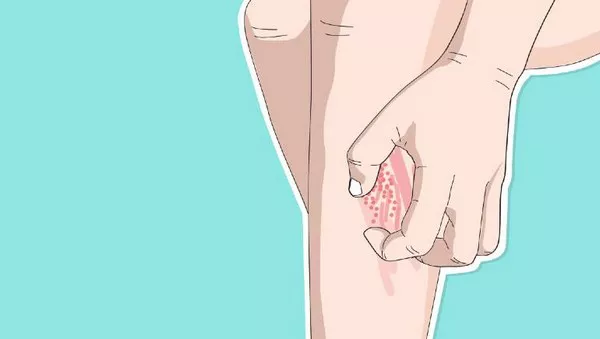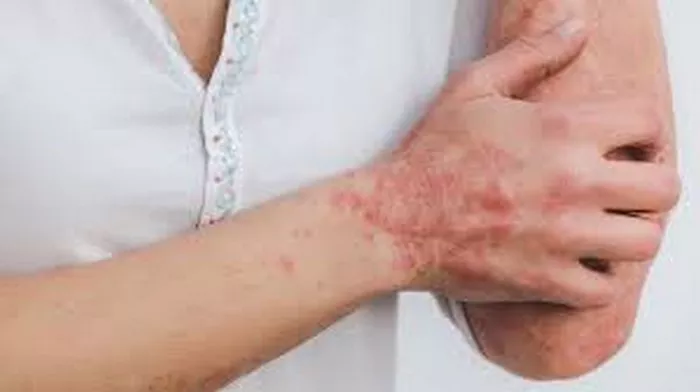Psoriasis is a chronic autoimmune condition that affects the skin, resulting in the rapid buildup of skin cells. This buildup leads to scaling on the skin’s surface, often accompanied by redness, inflammation, and itching. It is a common condition, affecting millions of people worldwide. In this article, we will delve into the various aspects of psoriasis, including its causes, symptoms, diagnosis, treatment options, and management strategies.
Understanding Psoriasis
Psoriasis is characterized by an accelerated skin cell growth cycle, causing cells to build up rapidly on the surface of the skin. This results in the formation of thick, red patches with silvery scales, commonly known as plaques. These plaques can appear anywhere on the body, including the scalp, elbows, knees, and lower back.
The Subtypes of Psoriasis
There are several subtypes of psoriasis, each with its own distinct characteristics:
1. Plaque Psoriasis: This is the most common form of psoriasis, characterized by raised, red patches covered with a silvery-white buildup of dead skin cells.
2. Guttate Psoriasis: Guttate psoriasis often appears as small, red spots on the skin, typically triggered by bacterial infections such as strep throat.
3. Inverse Psoriasis: Inverse psoriasis affects skin folds, such as the armpits, groin, and under the breasts, causing smooth, red patches of inflamed skin.
4. Pustular Psoriasis: This form of psoriasis is characterized by the presence of pus-filled blisters on the skin, accompanied by redness and inflammation.
5. Erythrodermic Psoriasis: Erythrodermic psoriasis is a severe form of the condition that results in widespread redness and shedding of the skin.
Causes of Psoriasis
The exact cause of psoriasis is not fully understood, but it is believed to involve a combination of genetic, environmental, and immune system factors. Some common triggers for psoriasis flare-ups include:
- Stress
- Infections, such as strep throat or skin infections
- Cold weather
- Certain medications, including lithium, beta-blockers, and antimalarial drugs
- Smoking
- Heavy alcohol consumption
- Symptoms of Psoriasis
The symptoms of psoriasis can vary depending on the type and severity of the condition. Common symptoms include:
- Red patches of skin covered with thick, silvery scales
- Dry, cracked skin that may bleed
- Itching, burning, or soreness
- Thickened, pitted, or ridged nails
- Swollen and stiff joints (psoriatic arthritis)
- Diagnosis of Psoriasis
Psoriasis is typically diagnosed by a dermatologist based on a physical examination of the skin, nails, and scalp, as well as a review of the patient’s medical history. In some cases, a skin biopsy may be performed to confirm the diagnosis. Additionally, imaging tests such as X-rays may be used to evaluate joint involvement in cases of suspected psoriatic arthritis.
Treatment Options for Psoriasis
While there is no cure for psoriasis, various treatment options are available to help manage symptoms and improve quality of life. These may include:
1. Topical Treatments: Corticosteroids, vitamin D analogs, retinoids, and calcineurin inhibitors are commonly used to reduce inflammation and slow down the growth of skin cells.
2. Phototherapy: Phototherapy involves exposing the skin to ultraviolet light under medical supervision, which can help reduce inflammation and improve symptoms.
3. Systemic Medications: For more severe cases of psoriasis, oral or injected medications such as methotrexate, cyclosporine, or biologics may be prescribed to suppress the immune system and reduce inflammation.
4. Lifestyle Changes: Making certain lifestyle modifications, such as avoiding triggers, maintaining a healthy weight, quitting smoking, and managing stress, can help reduce the frequency and severity of psoriasis flare-ups.
Managing Psoriasis
In addition to medical treatments, there are several self-care strategies that individuals with psoriasis can incorporate into their daily routine to help manage the condition:
- Moisturize regularly to prevent dryness and cracking of the skin.
- Avoid scratching or picking at psoriasis lesions, as this can worsen symptoms and lead to infection.
- Use gentle skincare products that are fragrance-free and hypoallergenic.
- Practice stress-reduction techniques such as yoga, meditation, or deep breathing exercises.
- Seek support from friends, family, or a support group to cope with the emotional impact of living with psoriasis.
Conclusion
Psoriasis is a common chronic skin condition that can have a significant impact on quality of life. While there is no cure, effective treatments are available to help manage symptoms and reduce flare-ups. By understanding the causes, symptoms, diagnosis, and treatment options for psoriasis, individuals can take proactive steps to effectively manage their condition and improve their overall well-being. If you suspect you may have psoriasis or are experiencing symptoms, it is important to consult with a healthcare professional for proper diagnosis and treatment.
























